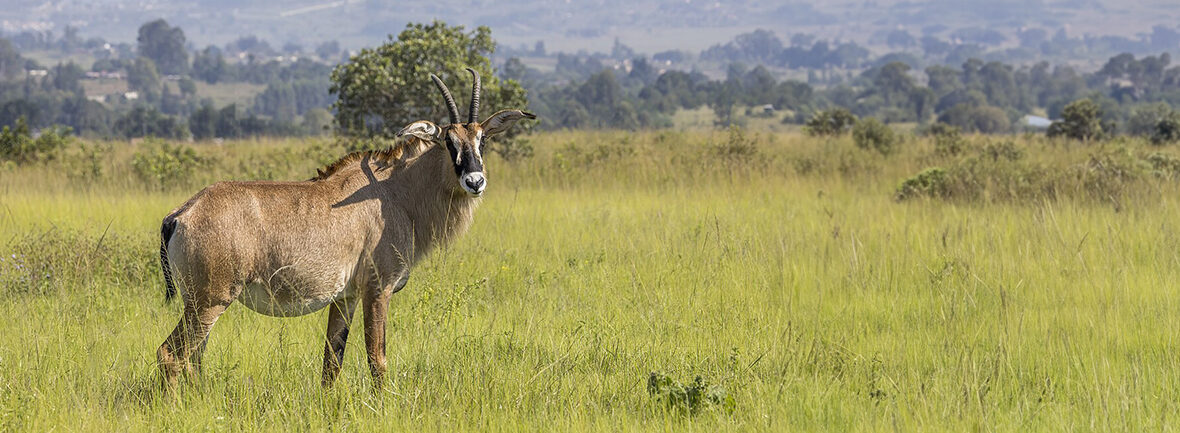
Found throughout western, central, and southern Africa it’s the roan antelope. They are among the largest of the antelope species, with the bongo, eland, and greater kudu exceeding them in the weight class. Even though they face the threats of habitat loss and destruction at the hands of residential and commercial developments; hunting; trapping; and competition for food with ranchers, these African beasts are abundant and thus listed as Least Concern by the IUCN. Their populations are decreasing though, and number an estimated 60,000 wild individuals.
First the Stats…
Scientific name: Hippotragus equinus
Weight: Up to 660 lbs.
Length: Up to 94.5 inches
Height: Up to 55.1 inches, at the shoulders
Lifespan: Up to 17 years
Now on to the Facts!
1.) The male’s horns can exceed 3.3 feet!
2.) Their preferred habitats are woodlands, subtropical grasslands, savannas, tropical grasslands, and shrublands.
3.) A group of antelopes are called a herd.
4.) These critters form harems of a dominant male and up to 15 females.
5.) They are crepuscular (active at dawn and dusk).
But wait, there’s more on the roan antelope!
6.) Fights over dominance are commonplace.
7.) While typically reclusive or shy, these critters have no qualms about defending themselves against perceived threats.
Did you know…?
These antelopes can run at speeds of up to 35 mph.
8.) The diet of choice for these herbivores (eat plant matter) is various grasses, leaves, shoots, stems, and twigs.
9.) Just like other antelope species, these critters are polygynous (1 male mates with multiple females).
10.) Breeding takes place year round.
But wait, there’s still more on the roan antelope!
11.) Females undergo up to a 9 month gestation (pregnancy) that yields a single calf.
12.) Up to 2 weeks before giving birth, the female will leave the herd to seek out an area of tall grass in which to birth her calf.
Did you know…?
Roan antelopes are sometimes confused with sable antelopes, but sables have a darker, brownish-black coat.
13.) The calf stays hidden in the grassy hide for up to 5 weeks, with mom visiting her calf each night to suckle and to associate with her newborn.
14.) In about 5 weeks time, the calf is typically strong enough to join the herd.
15.) Weaning of the calf usually takes up to 6 months.
But wait, there’s still a tad more on the roan antelope!
16.) Their scientific name “equinus” hails from the Latin word “equus” which translates to horse-like.
17.) They produce several sounds including an equine snort, when startled, a low hiss when injured, and a high-pitched squeal that sounds like a whistle.
18.) These antelopes were first described by French naturalist Étienne Geoffroy Saint-Hilaire in 1803.
19.) Lions, hyenas, and African wild dogs all prey on these antelopes.
Now a Short Roan Antelope Video!
Be sure to share & comment below! Also, check out the Critter Science YouTube channel. Videos added regularly!
Want to suggest a critter for me to write about? Let me know here.
Some source material acquired from: Wikipedia & IUCN
Photo credit: Charles J. Sharp



